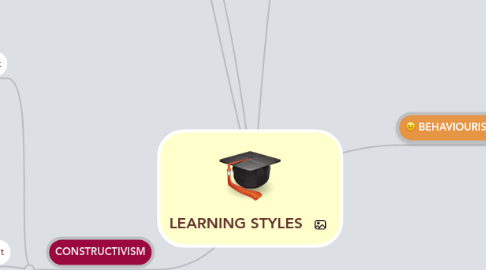
1. Organizing, nurturing and maintaining connections - Networking
1.1. CONNECTIVISM Connectivism is a learning theory for the digital age. Learning has changed over the last several decades. The theories of behaviourism, cognitivism, and constructivism provide an effect view of learning in many environments. They fall short, however, when learning moves into informal, networked, technology-enabled arena. Some principles of connectivism:
1.1.1. SOCIAL CONSTRUCTION of TECHNOLOGY (SCOT) technology does not determine human action, but that rather, human action shapes technology.
1.1.1.1. SCOT Critisisms
1.1.1.1.1. Ignores consequences
1.1.1.1.2. "ignores those without a voice but is influenced by their opinions"
1.1.1.1.3. Focuses on current issues but disregards deeper origins
1.1.1.1.4. Lacks morals
1.1.2. MEDIA ECOLOGY Media ecology looks into the matter of how media of communication affect human perception, understanding, feeling, and value; and how our interaction with media facilitates or impedes our chances of survival. Neil Postman
1.1.3. Connectivism Technologies
1.1.3.1. Social a networking
1.1.3.2. Communication tools
1.1.3.3. MOOC Massive Open Online Course
1.1.3.4. Blogs
1.1.3.4.1. Great tool for feedback and collaboration
1.1.3.5. Skype
1.1.3.5.1. Can be used for guest speakers, in which case would be a great example of PK,CK and TK
1.1.3.6. LinkedIn
1.1.3.7. Edmodo
1.1.3.8. Ning
1.1.3.9. Facebook
1.1.3.9.1. This is not a great example of content knowledge or pedagogical knowledge
1.1.3.10. Twitter
1.1.4. Connectivism Critisisms
1.1.4.1. Is it really anew theory?
1.1.4.1.1. I think that this is not new but easier to form networks and collaborate with others.
1.1.4.2. Informal
2. Technological Knowledge, Pedagogical and Content Knowledge TPACK. While several examples of learning style technologies have been listed the educators expertise in CK and delivery of these technologies PK is very important in order for there to be successful outcomes with the students.
3. CONSTRUCTIVISM
3.1. Mind is a network
3.2. Learning from interaction with environment
3.2.1. Constructivism people construct their own understanding and knowledge of the world, through experiencing things and reflecting on those experiences.
3.2.1.1. Critisisms of Constructivism
3.2.1.1.1. Assessment is difficult
3.2.1.1.2. Impractical without prior knowledge
3.2.1.1.3. Massive learners
3.2.1.1.4. Subjective learners
3.2.1.1.5. Time consuming
3.2.1.1.6. Video games such as SIMS
3.2.1.2. Constructivism Technologies
3.2.1.2.1. GoAnimate
3.2.1.2.2. Google Sites
3.2.1.2.3. storybird.com
3.2.1.2.4. Wordpress
3.3. Teacher facilitator
4. CONNECTIVISM
4.1. Accurate and meaningful
4.2. Ultimate direction is end goal
5. COGNITIVE LOAD
5.1. Chunking and organization
5.2. Provides meaningful information and builds on prior knowledge
5.2.1. Cognitive Load Theory (CLT) is an information processing theory used to explain the limits of working memory based on current knowledge of human cognitive architecture. Cognitive architecture refers to the concept of our minds having structures such as working memory, long term memory, and schemas.
5.2.1.1. Cognitive Technologies
5.2.1.1.1. Animoto
5.2.1.1.2. ePortfolio
5.2.1.1.3. Google Documents
5.2.1.1.4. Mindmeister
5.2.1.1.5. Mnuemonic devices
5.2.1.1.6. Padlet
5.2.1.1.7. PowerPoint
5.2.1.1.8. SMartboard
5.2.1.1.9. Skype
5.2.1.2. Cognitive Critisisms
5.2.1.2.1. Lack of clarity
5.2.1.2.2. Not measurable
5.3. Repetition and practice
6. BEHAVIOURISM
6.1. Stimuli
6.2. Response
6.2.1. BEHAVIOURISM as a complex process of responses to several kinds of distinct stimuli.
6.2.1.1. Critisism of Behaviorism
6.2.1.1.1. Disregards any internal component
6.2.1.1.2. Disregards free will
6.2.1.1.3. Over simplistic
6.2.1.2. Behaviouism Technology
6.2.1.2.1. Anywhere text
6.2.1.2.2. Class badges
6.2.1.2.3. iClicker
6.2.1.2.4. Poll everywhere
6.2.1.2.5. TedTalk
